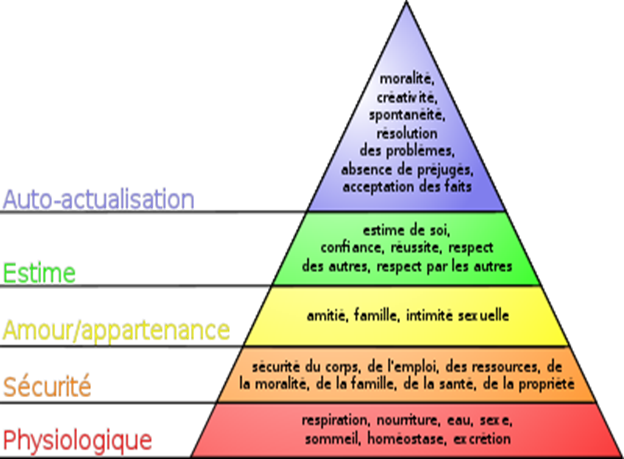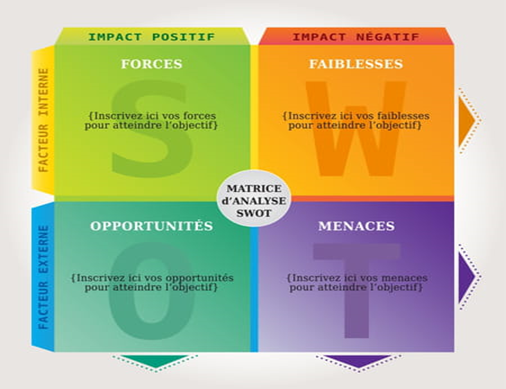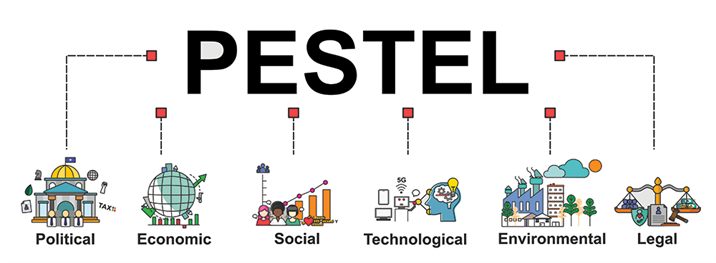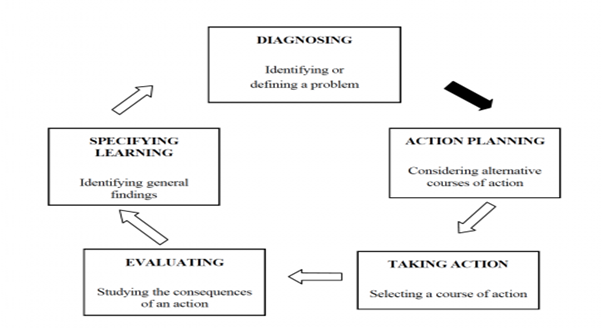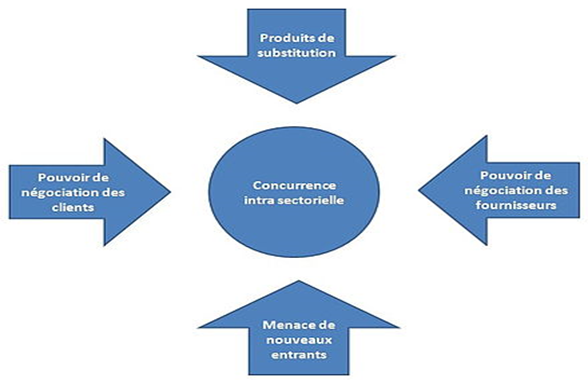Research Article
Neuro-Psycholinguistic Motivation Competence and Communication Conditions in Stroke Prevention in Charismatic Persons
Doctor of Philological Sciences (DSc), Bukhara State University, Uzbekistan.
*Corresponding Author: Bobokalonov Ramazon Radjabovich, Doctor of Philological Sciences (DSc), Bukhara State University, Uzbekistan.
Citation: Bobokalonov R Radjabovich. (2024). Neuropsycholinguistic Motivation Competence and Communication Conditions in Stroke Prevention in Charismatic Persons. Journal of Clinical Psychology and Mental Health, BioRes Scientia Publishers. 3(1):1-8. DOI: 10.59657/2993-0227.brs.24.018
Copyright: © 2024 Bobokalonov Ramazon Radjabovich, this is an open-access article distributed under the terms of the Creative Commons Attribution License, which permits unrestricted use, distribution, and reproduction in any medium, provided the original author and source are credited.
Received: December 24, 2023 | Accepted: January 05, 2024 | Published: February 15, 2024
Abstract
The article considers the causes and consequences of stroke, its prevention measures, adherence to a healthy lifestyle in the international arsenal, glorification of human dignity, the creation of a spiritual immunity program, and a call to the unity of the peoples of the world from a neuropsychological point of view. Also discussed the actual problems of integration of a linguistic person who is at the center of civilization into a competent, mature, enlightened, charismatic, political leader. This article analyzes the role of modern neuro-psycholinguistics in the teaching of French, English and Uzbek languages, the conditions for the formation of communicative competence and skills, socio-political features. It is based on the fact that the role of language in the development of psychology, cultural studies and neuroscience is a very necessary and urgent issue.
Keywords: psycho-neurolinguistics; kinesics; facial expressions; posture; visual contact; contact frequency; proxolics and extralinguistics; intonation; voice; pause; exhalation; crying; coughing; timbre; laughter; emotional states; condition of the mouth.
Introduction
Today, humanity is witnessing a global crisis, political discord, economic shortages, moral depression, and an intensifying regional situation that expands the possibilities of stroke patients. Because everyone has been his or her own views on life, society, politics. Everyone has been the right to live in a society, to communicate, to feel responsible. Everyone has the right to know many languages, not only in society. Forgetting people who suffer from certain dyslexia and auditory disorders that live with us in society is a completely foreign concept to the educational process. This research is aimed at protecting the right of such people to learn a language. Language is a means of communication, a mirror of the people and together with every nation. It really is. Language is a cultural phenomenon, so the heritage of each country, political, and cultural depends on its language. Language is a condition of every nation's existence. Members of society are equal beings. The fact that there are those among them who communicate with another world, who are stuttering, mentally retarded, brain-damaged, and interested in learning a language, is a pressing problem for upbringing and language teaching. Sensitive teachers can lend a helping hand to such people. This requires referral to neuropsychology and lingvoculturology.
Literature Review
The following scientific works were used in the formation of the article: N.A. Bagdasarova's "Forms of non-verbal emotional expression in culture" V. Birkenbil's "Intonation, facial expressions, sign language", G.V. Borozdina's "Psychology of Corporate Communication", R.R.Bobokalonov's "Interpretation of semantic and functional words in the Uzbek language", V.A. Goryanina's "Psychology of communication", I.N. Gorelov's "Components of nonverbal communication", V.P. Konetskaya's "Communication. Sociology", V.A. Labunskaya's "Nonverbal Behavior", E.A. Petrova's "Methods and techniques of injecting drugs into the body of animals", V.P. Morozov's "The Art and Science of Communication", Desmond Body's "Bible Text: Exmo", Edward Hall's «Theory of Proxemia».
The main part I. In accordance with the Geneva Declaration, dealing with issues of human rights protection, we found it necessary to emphasize the internal and external factors of stroke prevention. These are:
Social impact
Popularization of unemployment, banking, finance and life "on credit", mixing and assimilation of cultures, polarization of population strata and income stratification, difference between the lifestyles of the rich and the poor, traditions and violation of norms of social behavior, loss and replacement of values, growing popularity of business ideology.
Political influence
Favoritism in a democratic society, violation of constitutional rights and freedoms, wrong political decisions, absence of tactical and strategic priority socio-political ideas in political leadership, birth and death Demographic instability of indicators, social stratification of citizens, social verticalization of separatists, bandits, mafia and corrupt situations affecting the creation of a socio-psychological environment, hiding real information from the population, political ideology, unfair elections, aggravation of the internal and external situation in the country, the politics of the opposition force and factors affecting business.
Spiritual-domestic influence
Extravagance and obesity, emigration and isolated from family, immorality, hunger and physical weakness, unhealthy lifestyle.
Geographical location and natural climate effects
Environmental disturbances, climate changes, earthquakes and natural disasters. The primary factor contributing to the emergence of stroke: mental fatigue, stress, depression, mental exhaustion and fear. Due to this, diabetes, heart disease, cardio-logical and psychiatric diseases are increasing dramatically worldwide.
At the same time, we would like to ask a problematic question from the point of view of the only possibility of saving the planet Earth: will it be possible to create a free pill based on solidarity to prevent stroke on earth? Maybe this is a utopia for medical science?! When it comes to the preservation of the planet, it is appropriate to move immediately to practical work rather than to the theoretical importance of the issue. In our opinion, if all the peoples of the world unite under the slogan of "Peace, Freedom, Cooperation, Solidarity, Equality, Healthy Economic Competition, Fair Society and Transparent Politics" on the planet Earth under the Blue Dome, this drug can be created much cheaper and free of charge. There is no such pill yet. However, it is possible to take the first step to create it. Conditions for the realization of a noble goal:
The first condition: it is necessary to add only three substances to the composition of the pill. These are: "Kindness, sweet words and human dignity."
The second condition: the "snake and pot" symbol on the medical label should represent the symbol of human dignity.
The third condition: is to avoid atmospheric pollution, not to release chemical waste into the open atmosphere, to abandon artificial food products, to completely ban and eliminate narcotics, to increase the production of natural products, and to lead a healthy lifestyle. Tooth is necessary.
The fourth condition: to stop the war of destruction, not to spread the seeds of hatred, anger, hatred, conspiracy, trickery, heresy, political oppression, economic blockade, bloodshed, and crime between peoples. To stand in solidarity with natural disasters, famines, earthquakes, floods, climate change, coastal disasters, racial discrimination,
The fifth condition: ending conflicts between religions in the international sphere.
The sixth condition: choosing an international platform for spiritual maturity.
Stroke prevention should be the only goal in the world. Unfortunately, it will not be easy to achieve such a goal. Because any scientific conferences, congresses and symposia held in the name of goodness cannot eliminate all problems completely [1, pages 3-123]. However, humanity cannot be deprived of good hopes. Political instability, war, famine, painful climate changes, natural disasters, etc. are the reasons for the implementation of good deeds and make it difficult for humankind to unite around a single goal. Under the pretext of stroke prevention, there is no more important issue than turning the planet Earth into a stable point of peace and preventing a global disaster [2, pages 3-149].
A sudden and serious problem caused by the circulatory system in the brain is called a stroke. All types of cerebral hemorrhage have two forms: 1) hemorrhagic and 2) cause ischemic stroke. In both cases, the stroke does not end well. The blood collected in the first one puts pressure on the nerve fibers and they stop working. In an ischemic stroke, brain cells die because of insufficient supply of nutrients and oxygen. If any part of the brain is damaged, the neurological function involved in it also fails. Someone loses the ability to speak. Someone partially or completely paralyzes. Problems that prevent breathing can also happen to someone. Someone else dies.
In the risk group: sufferers of blood pressure (hypertension); patients with heart failure or arrhythmia; people with diabetes, overweight people; those taking certain medications that cause changes in estrogen levels; low movers; patients with high blood cholesterol; those who lived; sleep includes intruders and others. In addition to genetics on the mother planet, men are more likely to have a stroke than women [3, pages 3-223].
It is inevitable that there will be an excellent and reliable, original and fantastic pill for preventing stroke. Its name is "SWEET WORD". This pill exists in the nature of all peoples and nations. However, this pill is not visible and cannot be sold as a counterfeit product. Its production cost is a thousand times cheaper than any nuclear weapons. "SWEET WORD" pill opens the way to provide spiritual motivation to humanity. The only pill to prevent stroke can be taken with the help of "LANGUAGE, THINKING AND EDUCATION". A positive result will be achieved only if humanity accepts this noble proposal [4, pages 3-230].
The question arises as to who are the stroke victims. There is no such exact statistical information. However, the majority of people who have had a stroke are men, intellectuals, representatives of high intelligence, senior and junior leaders. The first symptoms of the disease begin with diabetes, iodine deficiency and diabetes, and end tragically with cardiological and oncological diseases. Billions of dollars are spent on treating the world's patients. As the pharmaceutical industry develops death tragedies.
The main part II. There is a shortage of speech in force majeure situations. Communication is a socio-psychological process of mutual exchange of information between people, carried out in two ways – verbal and non-verbal (in latin Verbalis – verbal, nonverbalis – non-verbal) ways of speech impact. This means that information is transmitted to people orally (verbally) or not orally (non-verbal). And both of these means of communication are equally important. [1; 6,238; 8.246; 10.189]. These both cases have not been deeply studied in the field of Uzbek linguocultorology and psychoneurolinguistics.
Non-verbal communication is necessary to ensure quickness in physical movement, adaptation to the situation, adequate communication in speech, clarity of thought. Because non-verbal communication is, a unique means of communicating data. Non-verbal means can accompany the speech process, complement speech and in some cases make the information “wordless” for the listener. Psychoneurolinguistics focuses on three main aspects: 1) mental preparation, 2) brain function, 3) language skills [3.247; 8.246].
E.A. Petrova notes that in the first 12 seconds of interlocutor's communication, 92% of information is visualized non-verbally. In the first 20 minutes of a conversation, using non-verbal gestures, key information is transmitted to the interlocutors. The number of non-verbal signals involved in the communication process is very large. In some cases, incompatibility of speech, and in such circumstances, if the meaning of the non-verbal cue contradicts the meaning of the verbal cue, people believe the non-verbal information.
Conversely, if a person punches himself in the air and then calls on him to compromise, then this gesture may contradict the content of the verbal information, and the public may not trust him due to the aggressive gesture. [9, 129]. Non-verbal instructions are as ambiguous as words. For example, a non-verbal "nod" signal can mean agreement, attention, recognition, greeting, gratitude, permission, motivation, etc. depending on the context used [10, 189].
Non-verbal communication means include: 1. Kinesics is a gesture of expressive movement, the direction of this movement. 2. Mimicry is the duration of the pause, the throw of the leg, the posture of the body, eye contact (gaze), the frequency of contacts. 3. Prosodic and extra linguistics - intonation, voice, pause, exhalation, crying, coughing, timbre, laughter; 4. Takeshika - handshake, applause, kisses; 5. Prose mica - keep distance, aim.
Kinesics is the most important means of non-verbal communication. Kinesics comes from an English word that has an expressive and regulatory function in communication. This is manifested in facial expressions to the position, gaze, gait of another person.
Facial expressions are a set of signals that are understandable to participants in communication, such as various movements of the hands and head, gestures. The number of gestures is important for people easily to understand themselves. The main characteristic of facial expressions is its integrity and dynamics. This means that during the facial expression of the six basic emotional states (anger, joy, fear, suffering, surprise and disgust), all movements of the facial muscles are coordinated. We learned about this from the research of V.A. Labunskaya [8, 246]. All people, regardless of nationality and culture, perform these imitation configurations with sufficient accuracy and consistency as an expression of the corresponding emotions. A unit of facial expression is called a mine. Each mine represents a face configuration. Information is mainly transmitted through the different positions of the eyebrows and lips.
Persistent emotions can include more feelings of joy, surprise, disgust, anger, and sadness, and less feelings of fear. According to V.A. Labunskoy: "If a person is excited, interested or in high spirits, his eyes widen four times more than usual." Conversely, when he is angry or sad, his eyes narrow more than usual. In such cases, there will be the following cases of the front parts: 1) emotional states: anger, hatred, suffering, fear, surprise, joy; 2) mouth position, open mouth, closed mouth. The mouth is generally closed; 3) lip position: the corners of the lips are lowered or raised; 4) Eye shape: eyes open or tight. The eyes are constricted, the eyes are wide open, the luminosity of the eyes is narrowed or open, the eyes are bright or dull, the luminosity of the eyes is not expressed brightly; 5) eyebrow position: the eyebrows are plucked at the bridge of the nose, the eyebrows are raised, the outer and inner corners of the eyebrows are raised; 6) Position of the forehead: The folds of the forehead form a vertical nasal bridge. The folds moving horizontally on the forehead are shown; 7) Face position: frozen face, dynamic face.
The facial expression contains not only information about a person, but also their appearance. The face is the main source of information about a person's psychological state, facial expressions are consciously several times better controlled than body movements” [8, 246]. For example, in certain circumstances, if a person wants to hide their feelings or deliberately convey false information, their body also becomes a source of information. Expressive gestures also play an important role in communication. Information is carried out through the gestures and postures of the human body. Many researchers state the position of the body: “It is the position of the human body that is specific to a particular culture. Body posture is a unit of elements of human behavior and verbal characteristics. This is why it is body language” [2, 176; 11]. The cultural traditions of each nation can also be determined from the position of the body. For example, in fiction and movies there are many examples of body posture. It is known that if a person is interested in communication, he will pay attention to the interlocutor and meet him. If he is not interested in communication, on the contrary, he leans to the side and leans back. A person who wants to declare himself, standing, in a tense position, the shoulders open, sometimes puts his hands on his waist; the person “frees himself”, is in a free and calm state. No matter how different the cultures of different people are, there will be similarities everywhere that improve a person's emotional state, arousal of emotions, increase the intensity of gestation. Although the specific meanings of individual gestures differ from culture to culture, there are similar gestures in all cultures [1; 5.416; 7, 164]. These are: 1) In communicative gestures (greeting, farewell, attention, prohibition, approval, refusal, questioning, etc.); 2) Modal attitude, that is to say, the gestures of evaluation: approval and protest, confidence and mistrust, confusion, etc., expressed in descriptive gestures, which have meaning in the context of the speech.
Prosodic and extralinguistic means regulate the flow of speech, save the means of linguistic communication, they fill, replace and predict the words of speech, express emotional states. Enthusiasm, joy and insecurity are usually strong, anger and fear are very strong, but are conveyed with tone, power and volume. Sadness, grief, fatigue usually results in decreased intonation at the end of a sentence in a sentence and a muffled voice. Prosody is a common name for rhythmic and intonation aspects such as pitch of speech, pitch of voice, timbre of voice, stress force. The extralinguistic system is the introduction of pauses in speech, as well as various psychophysiological manifestations of a person: crying, coughing, laughing, sighing, etc [16, 3-230].
The term "proxemics" was coined as the first spatial structure of communication by the American anthropologist E. J. Hall [12]. “Proxemics” means “privacy”. Proximal features include the direction of the partners during contact and the distance between them. Cultural and national factors directly affect the proxemic characteristics of communication. Prosemic signals: distance between people, touch, tapping of the recipient on the shoulder, etc. So, non-verbal communication is the manifestation of oneself without the use of words. The common body language between people is the basis of non-verbal communication. Knowing the language of gestures and body movements is not only a state of better understanding of the interlocutor, but also a self-explanation through non-verbal language by demonstrating his actions in the process of learning and teaching languages. Thus, non-verbal communication is the manifestation of oneself without the use of words. Common body language among people is the basis of non-verbal communication. Knowing the language of gestures and body movements is a state of not only better understanding the interlocutor, but also self-explanation through nonverbal language by demonstrating one’s actions in the process of language learning and teaching.
Analysis
What are the methods used? On the basis of modern research on text linguistics in world linguistics it can be observed that the following methods are used and the following methods are diversified: 1) discourse analysis; 2) study of public policy; 3) the pyramid of Maslow; 4) the SWOT matrix; 5) PESTEL analysis; 6) the action research; 7) the case study; 8) Porter's model.
Discourse analysis is a field of the human and social sciences whose object is discourse and which implies a methodological consideration. Speech analysis is a multidisciplinary, qualitative and quantitative approach that studies the context and content of oral or written speeches.
Public policy analysis is a study of public action, in other words, a study of state action. The goal is also to understand how the government implements its public policies and what the effects on society are.
Maslow's pyramid. The pyramid of needs, known as Maslow's pyramid, is a pyramidal representation of the hierarchy of needs that interprets the theory of motivation based on observations made in the 1940s by psychologist Abraham Maslow in «A Theory of Human Motivation», Psychological Review (no 50, 1943, p. 370-396).
Figure 1: Maslow's pyramid in French.
The axes of SWOT analysis
SWOT analysis allows a general development of the company by crossing two types of data: internal and external. The internal information taken into account will be the strengths and weaknesses of the company. As for external data, it will relate to nearby threats and opportunities. To establish its strengths and weaknesses, the entrepreneur must look internally at the resources at his disposal, whether human, financial, intangible (a patent) or material (a production capacity).
Internal axis: The internal diagnosis identifies the current characteristics of the organization, seen as strengths or weaknesses depending on the activities operated. They generally concern: human resources, production capacities, financial capacities, know-how held (see the VRIO method).
Strengths: resources possessed and / or skills held conferring a competitive advantage.
Weaknesses: lack with regard to one or even several key success factors or against competitors.
External axis: The external diagnosis lists elements that have a possible impact on the company.
Opportunities: the business environment may present certain areas of potential to be developed. They should be identified.
Threats: certain changes in progress or to come, can have a negative impact on the activities of the company.
Figure 2: The axes of SWOT analysis in French
The PESTEL analysis: what is it? The PESTEL analysis is a strategic analysis tool that allows the company to identify and measure the elements likely to influence its activity and its development. The PESTEL model is built around these six components. As we will see later, the importance of each component depends. The PESTEL analysis have the 6 components.
Figure 3: The PESTEL analysis have the 6 components
Figure 4: Action research
The case study is a method used in qualitative studies in the humanities and social sciences, psychology or psychoanalysis, but it can be used in studies to focus on a particular case. It aims at the in-depth study of a specified case, whether it be a specific person, group or subject.
Porter's model. The analysis of the industry is based on the concept of competition. The notion of competition is fundamental in strategic management. It is inherent in strategy. Managers are often obsessed with their immediate competitors, while many other forces can influence the competitiveness of organizations. Indeed, in strategy, must be considered as competitors:
Anything that can reduce a company's ability to generate profit. More broadly, anything that prevents a company from constituting a competitive advantage by limiting the degree of freedom of companies.
Figure 5: Porter's model in French.
It is clear that these methods are important not only for the text, but also for the analysis of various aspects of the development of society. The feelings and attitudes of people are enlivened through verbal communication. Information is conveyed logically, accurately and clearly, and sometimes vaguely. Ideas are exchanged verbally and non-verbally in parallel and separately. Through communication, the speaker not only conveys information, but also analyzes and synthesizes the message, exchanges ideas about difficulties in solving a problem, complains, makes demands, asks questions, seeks answers, etc.
Since the determination of whether non-verbal means accompany communicative-canonical speech means to one degree or another is a separate topic, we will restrict ourselves to the above examples. According to most linguists, the factors of verbal and non-verbal communication lie in the fact that people see each other, say goodbye, meet, applaud, congratulate, grieve, apologize, offer, confirm, deny, surprise, thank, satisfy, it is well observed in such communication processes [2.176; 4, 122; 10, 189]. Non-verbal speech signals, like verbal speech, transmit information to the listener in three situations: 1) when transmitting information to the interlocutor, 2) influence on the interlocutor, 3) when the conversation is animated [6, 238].
Conclusion
The first conclusion: Stroke is very difficult to prevent, but it can be avoided. If humanity chooses a healthy lifestyle instead of today's bloody conflicts, if every family dream of a prosperous life, if every physical body moves to a healthy lifestyle, if charismatic leaders appear in every team and enterprise, Perfect person a mature person, a perfect person, a charismatic leader will control the integration of people. As a result, the future of humanity will move to provide high-potential charismatic political education. With the intelligence of a charismatic leader, any problems will be solved peacefully in the standard of peace. Ascension, glorification will rise. "High intellectual, charismatic person" will be able to be directed to good goals with the "SWEET WORD" universal program. There is a tendency to stroke in a person's way of life, profession, dignity, consciousness, intelligence and ability. It is necessary to fill the brain of a charismatic leader - a genius with a healthy way of life and human value, and create a new immune system in it. He will be the savior of his people and nation. Therefore, I call on everyone to support the implementation of the universal program wholeheartedly and spiritually.
The second conclusion: As a result, any type of communication depends on the psychology of diplomatic relations., non-verbal communication is when a person expresses himself without words. But this method can be accompanied by oral speech. Common body language is the foundation of non-verbal communication. Sign language and body movements not only help to better understand the interlocutor, but are also very important in teaching language in the pedagogical process, helping to overcome neuropsycholinguistic problems. Creates conditions for a person's self-expression in society. The implication is that students' interest in teaching methods and teaching methods will increase, which will help prevent learning difficulties and meet the needs of special education. Education is not that every student approaches it according to their own interests. In the learning process, the student's assimilation of knowledge, the reading style, and motivation change. In addition, students are required to be able to master the materials to their liking.
References
- Bagdasarova N.A. (2006). Non-verbal forms of expression of emotions and contexts of different cultures: universal and national//Материалы межвузовского семинара по лингвострановедению. – МГИМО, Университет.
Publisher | Google Scholor - Birkenbill V. (1997). Language intonation, mime, gesture. – С.-П.: «Питер». –176 c.
Publisher | Google Scholor - Borozdina G.V. (1998). Psychology delovogo obshcheniya //Глава В. Невербальные особенности в процессе делового общения. - М.: «Деловая книга». – 247 с.
Publisher | Google Scholor - Bobokalonov R. R. (2023). Speech production, semiotic sign, discourse and neuropsycholinguistic status (Nutqiy hosila, semiotik belgi, diskurs va neyropsixolingvistik holat). Monograph, GlobEdite. Republic of Maldova, Europe printed. 3-223.ISBN: 978-620-0-64729-0.
Publisher | Google Scholor - Горянина В.А. (2002). Психология общения - М.: Издательский центр «Академия». 416 с.
Publisher | Google Scholor - Горелов И. Н. (1980). Невербальные компоненты коммуникации. – М.: «Наука». 238 с.
Publisher | Google Scholor - Конецкая В.П. (1997). Социология коммуникации. – М.: МУБУ. 164 с.
Publisher | Google Scholor - Лабунская В.А. (1988). Невербальное поведение (социально-перцептивный подход). – Ростов-на-Дону: «Феникс». 246 с.
Publisher | Google Scholor - Петрoвa Э.A. (2019). Пути и способы введения лекарственных средств в организм животных. – Красноярск: Красноярский государственный аграрный университет. 129 с.
Publisher | Google Scholor - Морозов В.П. (1998). Искусство и наука общения: невербальная коммуникация. - М.: ИП РАН, Центр «Искусство и наука». 189 с.
Publisher | Google Scholor - Моррис, Десмонд. (1966). Библия языка телодвижений: Эксмо; Москва; 2010
Publisher | Google Scholor - Холл, Эдвард. Теория проксемии. 1966.
Publisher | Google Scholor - Bobokalonov R. R. (2023). Medicine and neuropsycholinguistics. (Tibbiyot va neyropsixolingvistika). Monograph, GlobEdite. Republic of Maldova, Europe printed,3-123. ISBN: 978-620-0-64769-6.
Publisher | Google Scholor - Bobokalonov R.R. (2023). Нейропсихолингвистика: языковая личность и харизматический человек. Теория, практика и методика. Monografiya, LAP LAMBERT Academic Publishing, Repablic of Moldova, Europe printed. 3-230. ISBN: 978-620-6-15214-9.
Publisher | Google Scholor - Sayfullayeva R.R., Bobokalonov R.R. (2023). Neuropsycholinguistics: the linguistic personality and the charismatic person (Neyropsixolingvistika: lingvistik shaxs va xarizmali inson). Monograph, GlobEdite. Republic of Maldova, Europe printed. 3-149. ISBN: 978-620-0-64878-5.
Publisher | Google Scholor - Bobokalonov R. R. (2023). Neuropsycholinguistics: linguistic personality and charismatic person. Theory, practice and methodology (Нейропсихолингвистика: языковая личность и харизматический человек. Теория, практика и методика). Monografiya, LAP LAMBERT Academic Publishing, Repablic of Moldova, Europe printed. 3-230. ISBN: 978-620-6-15214-9.
Publisher | Google Scholor

